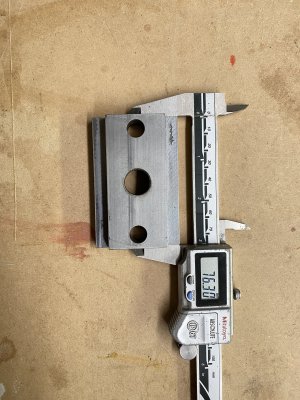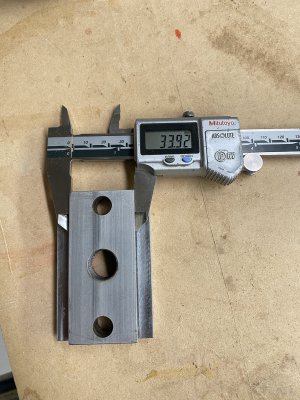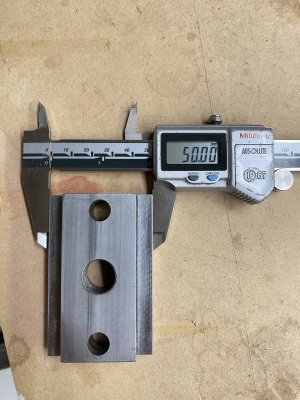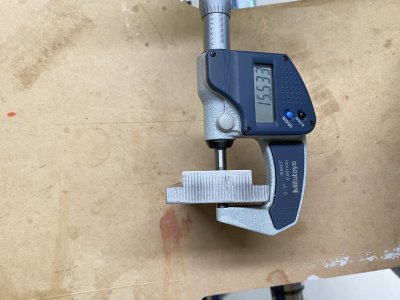- Joined
- Jul 2, 2014
- Messages
- 7,571
Something to watch out for when making your first t-nuts is the height of the nut above the step. There is always some play in a t-slot. When you pull up on a bolt or nut in the t-slot, the top of the t-nut must not protrude above the table. Yes, that sounds stupidly simple and reasonable, but it is a common problem that causes many newbies grief. When you tighten down on the bolt or stud and the t-nut protrudes, it locks against the bottom of the vise or whatever you are bolting down. The bolt is tight, but it is not clamping the work or vise down to the table. I aim for the top of the t-nut to be about .030" or more below the top of the table when clamped, so swarf does not become a problem. Have fun!Definitely a newbie across the board when it comes to machining. Thanks for the advice Bob.





